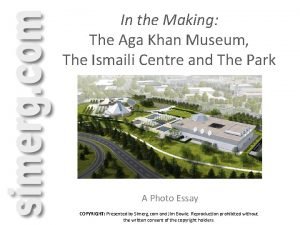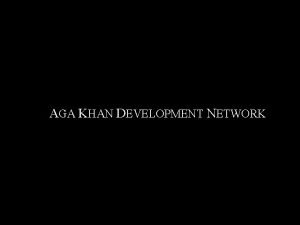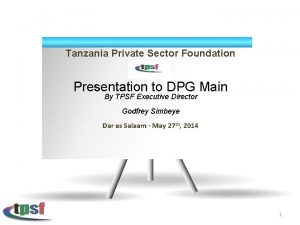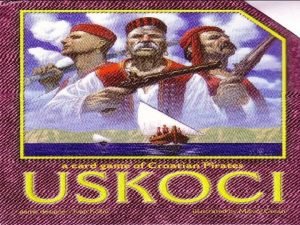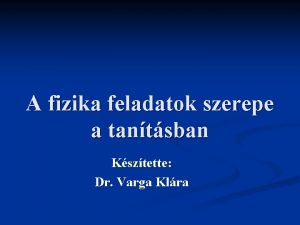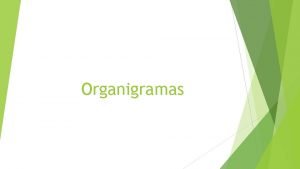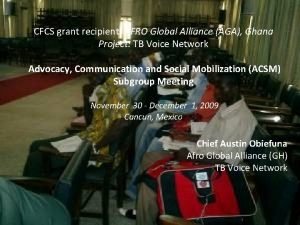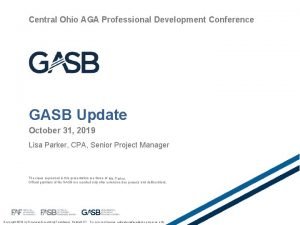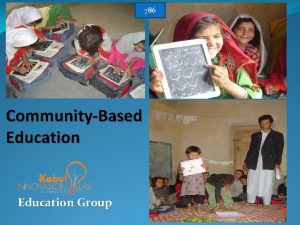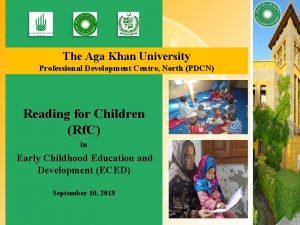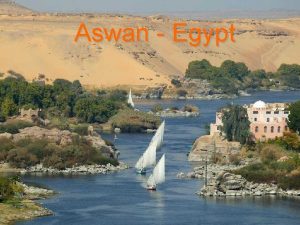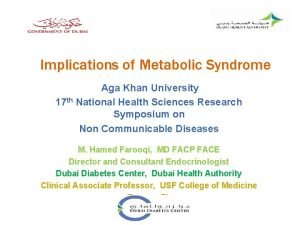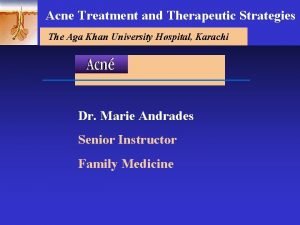AGA KHAN FOUNDATION Tanzania Aga Khan Foundation Tanzania











- Slides: 11

AGA KHAN FOUNDATION Tanzania

Aga Khan Foundation Tanzania • AKF Tanzania, as part of the Aga Khan Development Network (AKDN), works in collaboration with partners to develop and promote innovative solutions that contribute to improving the quality of life Approach: • Multi-Input Area Development (MIAD) – Long-term, multiple AKDN investments in multiple sectors in given geographies • Institutional and Systems Strengthening – Identifying development drivers; strengthening existing systems and local institutions – public, private and community based; working with others; learning and policy dialogue

Why Lindi & Mtwara Poor indicators, strong growth potential Health and Education Indicators • 40% of children under 5 years stunted; • 31% in Lindi have access to safe water; • 52% of the population in Lindi have access to toilet facilities; • 54% of children in Lindi and Mtwara enter primary school at the right age (7 years); • 12% gross pre-primary enrolment. • 59% literacy in Lindi; 62% in Mtwara Despite agricultural potential: • Low average rice yields of 500 kg/hectare • Low average sesame yields of 341 kg/hectare • Limited access to quality inputs • Over 70% of people are excluded from formal and informal financial services (Finscope Survey 2009) • 2% of cultivated land irrigated • Food insecurity up to 4 months per year

Coastal Rural Support Programme Tanzania (CRSPT) • Established in 2009 with a multi-sector vision in Mtwara and Lindi • Initial focus on economic sector – Increasing agricultural productivity (rice and sesame) – Strengthening agricultural market system, and – Improving access to finance – Learning agenda – research for action • Education and health programmes from 2013

Coastal Rural Support Programme (CRSPT)

Rural Economic Development Connecting smallholders to growth by contributing to sustainable improvements in food security, income, assets and savings of households in targeted regions Achievements • Rice and sesame yields increased • Aggregated farmers (44, 000 trained to-date) • Bringing in larger buyers and input suppliers • Encouraging private sector growth from small to large (150 local entrepreneurs trained, 11 rice millers up from 4)

Interlinked Production and Market Development • Extension Services Systems strengthening: Seed supply, storage, extension • Market for produce • Inputs and Access to Finance Gov’t Extension Officers, Community Facilitators, Radio, Village. Based Agents VBAs, Buyers, Input Suppliers, Savings Groups Traders, Buyers, Contract Farming Farmers groups, PCs, PMGs, Irrigation Building private sector awareness Local entrepreneurs supported and linked • Surplus grown and aggregated Facilitating incentives for buyers and suppliers

Access to Finance: Savings Groups • 113, 000 people in 5, 808 savings groups • 65% female participation • USD 5, 537, 000 mobilized in savings by members • Average savings per member $40/cycle • Many groups aligned to agricultural cycle

Connecting Smallholders to Growth Transforming a fragmented agricultural system into a vibrant business opportunity: local entrepreneurs (VBAs), outside enterprises, suppliers, buyers. Challenges with market/political environment around primary cooperative system, seed value chain, post-harvest losses, climate change, access to finance

Long-term Vision Supporting Poverty Reduction and Growth in Mtwara and Lindi • Focus on sectors with potential for growth and multiplier effects – Value chain strengthening in rice, sesame, horticulture, pulses – Irrigation (especially rice and horticulture) – Conservation agriculture for more efficient and sustainable land management – Access to finance (linkages and technology driven solutions) – Deeper links between smallholders and markets – contract farming, farmer companies • Greater focus on systems strengthening in key areas that unlock potential for growth – Extension service, input supply, warehouse receipt system, agricultural marketing system and institutions such as AMCOs/PMGs, and financial services • Increased collaboration with the private sector (for the benefit of small holders) • Agricultural policy, diffusion of successful approaches to similar lowland rainfed

Field Visit Agenda Group 1 2. 00 -2. 45 pm Introduction and Discussion on AKF –CRSPT approach to private sector 2. 50 – 3. 00 pm Travel to Haule Rice Miller 3 – 3. 30 pm – 3. 45 pm 3. 45 -4. 45 pm Haule Rice Mills Storage Facility Mtwara Urban-Mnarani Travel to Nnekachi –CBSG in Mtwara Urban Visit Nnekachi –CBSG Mtwara Urban 4. 45 -5. 00 pm Back to Hotel 7. 00 -9. 00 pm Dinner organised by AKF at Msemo for DPG-PSD, Govt. officials and Development partners Group 2 2. 00 -2. 45 pm Introduction and Discussion on AKF –CRSPT approach to private sector 2. 50 -3. 20 pm Travelling to CBSG – Yatakamoyo at Mikindani 3. 20 -4. 00 pm Yatakamoyo CBSG Mikindani 4. 00 -4. 30 pm Travel to Tuinuke PMG - Mpapura 4. 30 -5. 00 pm Visit Tuinuke PMG - Mpapura 5. 00 -5. 45 pm Back to Hotel 7. 00 -9. 00 pm Dinner organised by AKF at Msemo for DPG-PSD, Govt. officials and Development partners

